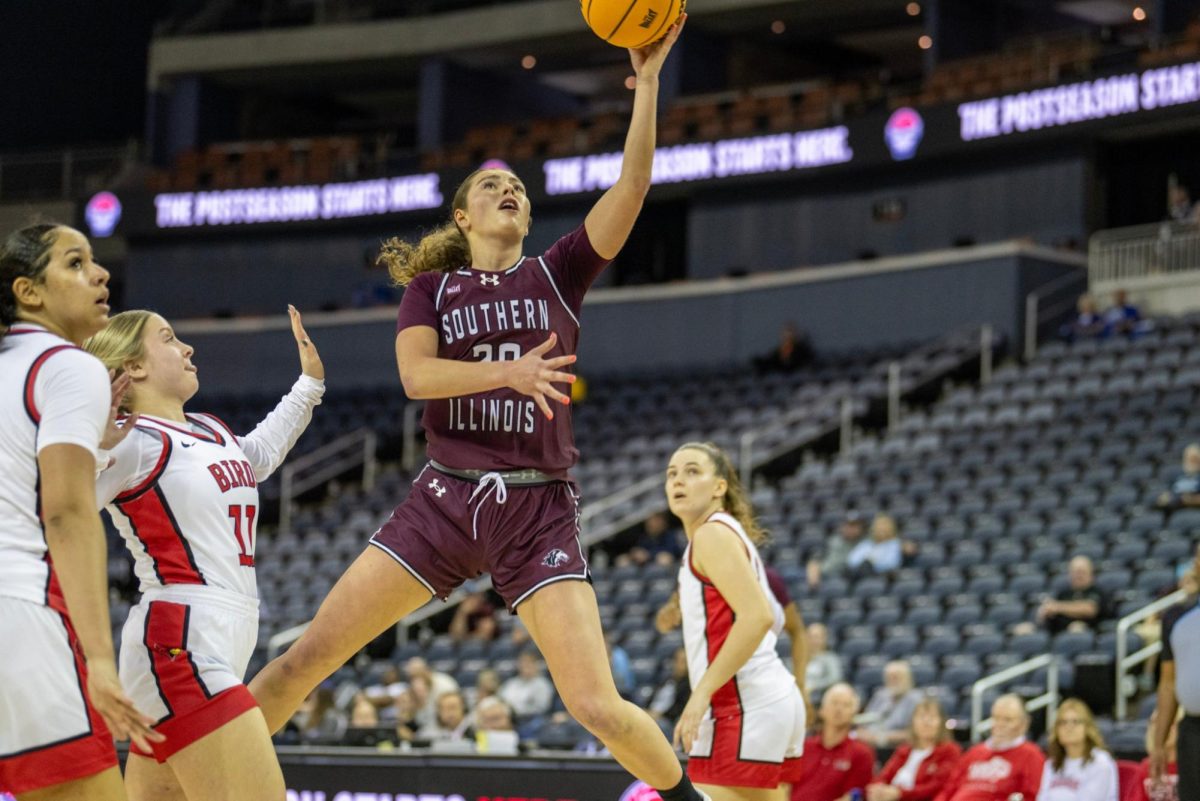Freshmen treatment overshadows transfer potential
April 9, 2014
The financial aid website for the university might as well read ‘transfers need not apply’.
The Chancellor’s Scholarship at SIU is the most financial support available to an incoming student, totaling more than $85,000. The scholarship provides tuition, fees and room and board for four years. In order to qualify, students must meet the application date of Dec. 1, have an ACT score in the high 20s, and a GPA of 3.8 or higher.
There’s just one problem. The SIU Chancellors scholarship — often referred to as a ‘full ride’ —followed by the university excellence scholarship, and dean’s scholarship, covering at least $16,000 are only available to freshmen.
Advertisement
SIU is not the only institution guilty of shunning some of its most likely graduates. Schools such as the University of Illinois and Eastern Illinois also offer these hefty sums to freshmen only. Transfer students are not eligible for a full ride education, despite their ability to show success in a collegiate setting.
A November article published in Inside Higher Ed, stated 60 percent of community college students who transfer to a four-year institution graduate within the next four years. That number jumped to 71 percent when considering students who earned an associates degree prior to transferring. The number of incoming freshman who graduated within six years at SIU: 46.2 percent.
There are educated, hard working students missing out on the opportunity for financial support in their quest for a quality education all because of transfer status. The choice to pace oneself, attend community college, earn one degree at a time and adjust to college classes not only goes ignored by state institutions, but also discriminated against.
If an incoming transfer had a 4.0, a 27 on their ACT and was in good moral standing, he or she would be forced to apply for department scholarships, most no more than $1,000. While many scholarships are available through organizations such as the community college honor societies, nothing as hefty as $85,000 has been given to a transfer student from his or her four-year institution.
The University of Florida, University of Michigan and University of Colorado Boulder, all offer transfer scholarships on the high end of $5,000, but nothing close to the full-ride a successful academic transfer student deserves. However, schools such as the University of Maryland, and Columbia College have gone against the grain and offer aid such as the, Transfer Academic Excellence Scholarship, which covers tuition for four semesters. It’s no full ride, but it’s a step in the right direction.
To cut off viable incoming students for no other reason than ‘you didn’t come here first’ is wrong and impedes the progress of the quality of students attending a university.
Most Illinois universities do not publish transfer retention rates, as only freshman retention data is required by the state. Only one school seems to shamelessly publish its transfer retention information. As of 2011 at Western Illinois University, 53.4 percent of freshmen graduate within five years, while the transfer students graduation rate remains steady at 67.5 percent.
Advertisement*
Not only is retention data for transfers hard to track down, even more impossible is finding out their GPA or ACT scores. Once a transfer student is admitted into SIU, he or she is just morphed into whatever class standing their achieved credits put them in. ACT scores are tracked only for incoming freshman. SIU keeps one record of transfer students: which community college they came from, and whether that school was in-state or out of state. However no other information regarding transfers is available in the SIU fact book.
If a transfer student can get a full ride athletic scholarship for how well he or she shoot, or throw, or kick a ball, why is someone with an associate’s degree and a 4.0 not eligible for the same benefits on academic scholarship?
Advertisement








